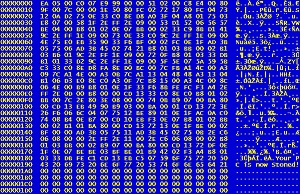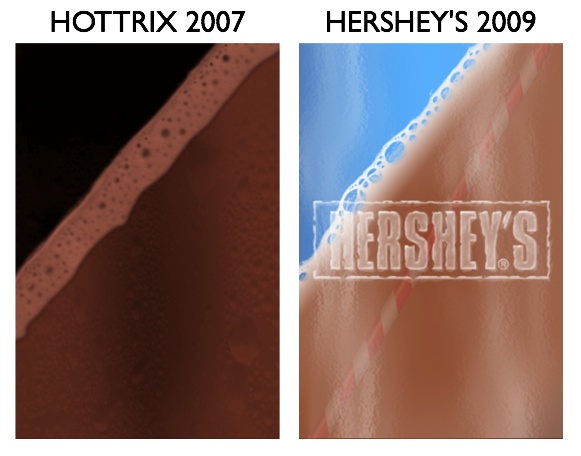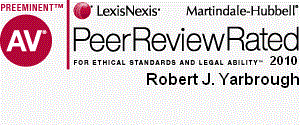Newsletter Issue 19 - September, 2010
In this issue:
What to do when you learn of a dangerous patent application
Ask Dr. Copyright - transfer of
software licenses
Keeping it private in the workplace
A gourmet's guide to IP rights
Crying over unspillable milk
What Can You Do When You Learn Of A Patent Application That May Be Dangerous To Your Business?
 Your
competitor newly advertises its product as 'patent pending,' but you
know that the product or a similar product has been in use or on
sale for a long time. You fear that if your competitor is successful
in obtaining the patent, the competitor may be able to prevent you
from making, using or selling your product and may put you out of
business.
Your
competitor newly advertises its product as 'patent pending,' but you
know that the product or a similar product has been in use or on
sale for a long time. You fear that if your competitor is successful
in obtaining the patent, the competitor may be able to prevent you
from making, using or selling your product and may put you out of
business.
What can you do to prevent a patent to your competitor from interfering with your business?
You have four options:
1. Your first alternative is to do nothing. Your competitor cannot sue you for patent infringement until the patent actually issues. Since your competitor's patent may never issue and since any resulting patent may not apply to your products, the competitor's patent application may never affect your business. This no-action alternative initially has a cost of zero, but may include years of uncertainty and eventually high costs if you are forced to defend a claim of infringement in Federal court.
2. Your second alternative is to initiate a "public use" proceeding before the Patent and Trademark Office under 37 CFR1.292. A 'public use' proceeding gives you the opportunity to submit evidence to demonstrate that the invention or a product similar to the invention was on sale or in public use more than one year prior to the date that your competitor filed his or her application and that the competitor's invention is anticipated or obvious. If you are successful, then the PTO will deny all or part of the competitor's patent claims.
You must act quickly. A petition to initiate a 'public use' proceeding MUST be filed prior to the date that the competitor's application is published, which in most cases will be about eighteen months from the initial filing date. If you do not know your competitor's application number, provide as much identifying information as you can in your petition and the PTO will search for the appropriate patent application. The petition will include affidavits, declarations and exhibits to support the prior use or sale.
If the PTO determines that the petition, affidavits and documents, if true, establish a case that the competitor is not entitled to a patent, then the PTO will set a schedule for submission of testimony and evidence. If, from the evidence, the PTO examiner determines that prior public use or sale of the invention precludes all or some of the claims of the patent application, then the PTO will deny those claims.
The public use proceeding allows you to participate directly in the process, to introduce testimony and exhibits, to cross examine opposing witnesses and generally to make your voice heard by the patent examiner. For more information, see MPEP section 720 through 720.05.
3. Your third option is to submit prior art patents or written publications to the PTO under 37 CFR 1.99. This section allows you to submit only a bare list of patents and prior publications. You must submit the list by no later than two months from the publication date of your competitor's patent application.
Submission under this section is inexpensive but quite limited. You can submit only publications and prior patents. You cannot submit affidavits, non-publication exhibits, argument, or explanation of why the prior art publications are relevant. You also have a narrow window to submit information after the application is published.4. Your fourth alternative is to take advantage of the duty of your competitor's patent attorney and your competitor to submit any information relevant to patentability to the PTO patent examiner. You can have your attorney submit evidence of prior use, sale, or prior art publications to your competitor or your competitor's patent attorney at any time prior to the issuance of your competitor's patent. If the information is relevant and if your competitor or your competitor's patent attorney fails to notify the examiner of the relevant information, then he or she is guilty of 'inequitable conduct' and any patent issued on your competitor's application will be unenforceable. Opinions differ as to whether the duty to disclose extends to argument or explanation of why the information is relevant.
The submission of information to the attorney or the competitor
is inexpensive and not limited to printed publications or patents;
however, you have no control over the proceedings and will have no
direct communications with the PTO. For more information, see
Dennis Crouch's discussion of the subject.
Robert Yarbrough
 Ask
Dr. Copyright...
Ask
Dr. Copyright...
Dear Dr. ©:
I want to buy some new software for my PC, and have found that the prices on eBay are lower than in my local computer store. Provided that the eBay seller is reputable, why not save a lot of money, since the software is now many times more expensive than the computer hardware?
signed,
Software Cheapskate
Dear Cheap:
Until a couple of weeks ago, your skinflint solution to the cost of software seemed like a lead pipe cinch (which, I suspect, you have never seen, and have no idea what it's used for, but I digress...) There are plenty of reputable businesses on eBay and elsewhere that sell copies of both current and old version software at good prices. Many of these buy the software from stores and other companies that go out of business. Much of it is "NIB" (eBay slang for new, in box) and comes with the manuals, registration numbers, and disks.
Unfortunately, a couple of weeks ago, the Ninth Circuit Court of Appeals threw a bit of a sabot (a wooden clog worn by French factory workers in the 19th Century) into your plans. (Vernor v. Autodesk, Inc. (No. 09-35969, 9th Cir.)) You see, the Court ruled that since software is "licensed" and not "sold", the software companies are able to insert legal language into the licenses to prevent transfer of the software from the original licensee to anyone else. The Court specifically said that the "first sale doctrine" under copyright law (that after a copyrighted work is sold for the first time, the seller can't control what is done with it thereafter) does not apply when there is never a first sale (because it's only a first license!) It's the first sale doctrine that allows used book and record stores to operate, and NetFlix to send you your movie DVDs (because after NetFlix buys the disk, it can do whatever it wants with it, as long as it doesn't make copies.)
If you read the license language on the EULA (End User License Agreement) that came with your software, you may find restrictions on transfer. Such restrictions are common and exist in the Windows EULA, the Microsoft Office EULA, and many others. You never bought the software, only a license, and thus, your use and transfer may be restricted.
If you think that this situation is bad, I have news for you...it gets worse.
For instance, that music and those movies that you thought you bought from iTunes: it's actually just licensed to you (the legal terms and conditions run over 50 pages.) Your new car contains dozens of microprocessors, and the software that runs the car...you guessed it - licensed. Your new Blackberry, your new digital television, your new microwave oven...all contain licensed software. In fact, even such non-computer things as the light switches, thermostats, portable telephones, refrigerators, garage door openers, doorbells, fire alarms, water heaters, furnaces, air conditioners, and music keyboards all contain licensed software. This phenomenon has led some to conclude that we are witnessing the death of sales. From now on, all you will get for your money is a license. ("Excuse me, miss, but I noticed in the produce aisle that the lettuce is licensed for garnish, but not for salads. Can I use it to make a BLT?")
Under the Ninth Circuit's reasoning, there is no limit to the restrictions that could be imposed in licenses. It is possible that one day soon, you may not be able to have a garage sale that includes anything electronic without providing written notification (and possibly payment) to the dozens of licensors who own the software in your stuff. You may not even be permitted to sell or rent your house because doing so may violate one or dozens of software licenses.
Until this question is addressed by state and federal legislatures, the area is a murky one. You can count on the fact that companies will want to impose the most restrictive terms that they can get away with. For computers and software, these terms will mean that you don't own what you thought you bought. For other types of products, the terms will be tempered by traditional notions of sale - at least until the licensing lawyers get ahold of it.
So, Cheap, at least for now, it looks like you'd better have a
larger software budget. Those good deals on eBay just became a
minefield and you just can't afford to step in the wrong place. If
you have any questions about licenses, ask the lawyers at LW&H. They
wade through that legal mumbo-jumbo every day!
Lawrence Husick
Keeping it Private in the Work Place
 Have you ever wondered about the privacy of your web-based e-mail
communications, e.g., Hotmail, Yahoo, or Gmail, as you carry out
your personal business on your company-owned computer? A March 2010
decision by the Supreme Court of New Jersey sheds some light on the
subject. In
Stengart vs. Loving Care Agency, Inc., Marina Stengart used her
company-issued computer to communicate with her lawyer through her
personal, password-protected, web-based Yahoo e-mail account.
Stengart eventually resigned her position and sued her former
employee, Loving Care Agency, for employment discrimination. During
the lawsuit, Loving Care Agency conducted a forensic examination of
her computer and discovered her e-mails, including e-mails to her
attorney written on her Yahoo account, among the web pages stored in
the computer's Internet cache. The story does not end there because
opposing counsel disclosed Stengart's attorney-client e-mail
exchanges, claiming that Loving Care Agency had the right to review
them. That's where the court jumped in.
Have you ever wondered about the privacy of your web-based e-mail
communications, e.g., Hotmail, Yahoo, or Gmail, as you carry out
your personal business on your company-owned computer? A March 2010
decision by the Supreme Court of New Jersey sheds some light on the
subject. In
Stengart vs. Loving Care Agency, Inc., Marina Stengart used her
company-issued computer to communicate with her lawyer through her
personal, password-protected, web-based Yahoo e-mail account.
Stengart eventually resigned her position and sued her former
employee, Loving Care Agency, for employment discrimination. During
the lawsuit, Loving Care Agency conducted a forensic examination of
her computer and discovered her e-mails, including e-mails to her
attorney written on her Yahoo account, among the web pages stored in
the computer's Internet cache. The story does not end there because
opposing counsel disclosed Stengart's attorney-client e-mail
exchanges, claiming that Loving Care Agency had the right to review
them. That's where the court jumped in.
The issues before the court were, first, whether Stengart had an
expectation of privacy in her personal e-mail despite her having
accessed them on a company computer and, second, whether Loving Care
Agency's lawyer violated the attorney-client privilege by reviewing
her e-mail. In New Jersey, as in most states, an employee's
expectation of privacy in his or hers computer equipment is
typically determined by employee policies, particularly if they are
written and disseminated to all employees in the form of an employee
handbook. Loving Care Agency issued a pretty standard employee
handbook, which prohibited certain obvious misuses of company
computer equipment and provided it the right to "review, audit,
intercept, access and disclose" all materials on company computer
equipment.
Although it appears that this language provided sufficient notice to
employees that they have no expectation of privacy in their
computers, the handbook created an ambiguity by also permitting
occasional personal use. The Court also pointed out that handbook
did not warn employees that the contents of web-based e-mails could
be forensically retrieved by Loving Care. The Court held that the
ambiguous employee handbook, Stengart's obvious desire to keep her
e-mail private, and her expectation of privacy in her
attorney-client communications created an expectation of privacy in
her personal e-mails even though they were contained on
company-provided computer equipment. Having determined that Stengart
had an expectation of privacy in her e-mails, it was an easy step
for the Court to conclude that Loving Care Agency's lawyer had
violated the attorney-client privilege by disclosing obviously
privileged communications.
The Supreme Court of New Jersey's decision in
Stengart is important for a number of reasons. It suggest to
employees that they should be careful with respect to e-mail
communications -- even web-based e-mail -- made on company
computers, and for employers it suggests that employee policies must
give adequate notice about the information the employer can retrieve
from employees' computers. Also, if an employer permits employees to
use company equipment for personal use, it may create an expectation
of privacy where none may have previously existed. Take heed even if
you are not a New Jersey company. Although the case was decided by
New Jersey court, other state courts may find it persuasive.
Adam Garson
A Gourmet's Guide to IP Rights
 Have you ever wondered why it is so difficult to find a bottle of
champagne in the domestic section of your local wine and spirits
store? This is because the sparkling wine called "Champagne" is not
a domestic product; it is produced exclusively within the Champagne
region of France. Through international treaty, most countries limit
the use of "Champagne" to only those wines from the Champagne
region. As a result, the sparkling wines produced in the United
States do not (or should not) use the term "champagne" on their
labels. Indeed, in 2006, the U.S. Congress passed
legislation
prohibiting the use of the term "champagne" in association
with domestically produced sparkling wines.
Have you ever wondered why it is so difficult to find a bottle of
champagne in the domestic section of your local wine and spirits
store? This is because the sparkling wine called "Champagne" is not
a domestic product; it is produced exclusively within the Champagne
region of France. Through international treaty, most countries limit
the use of "Champagne" to only those wines from the Champagne
region. As a result, the sparkling wines produced in the United
States do not (or should not) use the term "champagne" on their
labels. Indeed, in 2006, the U.S. Congress passed
legislation
prohibiting the use of the term "champagne" in association
with domestically produced sparkling wines.
A geographical indication is a type of intellectual property right that is associated with goods -- usually food-related goods -- originating in a specific geographical place. Typically, such goods have a certain quality or characteristic that is associated with its place of origin. Various countries, particularly those belonging to the European Union, assiduously work to enforce laws to protect the reputation of regional foods through international treaties. Although the United States is not a party to these international treaties, the owners of geographical indicators are still able to protect their trademarks by registering them with the United States Patent and Trademark Office. For example, "Prosciutto di Parma" and "Parmigiano Reggiano" are registered certification trademarks designating foods originating in specific Italian geographical regions.
Owners of domestic regional indicators protect their trademarks in
the same manner. For instance, the Idaho Potato Commission has a
particular design and slogan ("Grown
in Idaho") that has been used exclusively for Idaho potatoes
since 1955. In addition to certification, the Idaho Potato
Commission has registered the design and slogan as a trademark.
Likewise,
"Vidalia", is a registered trademark for Vidalia onions, which
are grown within a certain region near Vidalia, Georgia. When you
purchase a carton of juice stamped with "100%
Florida orange juice" -- it, too, a registered trademark -- you
know that it has been certified by Florida's Department of Citrus
and contains only juice squeezed from Florida oranges. So the next
time you reach into the cheese case for a wedge of delicious
Roquefort cheese, you can be assured that it has been
manufactured from sheep's milk and cured deep in the natural caves
within the community of Roquefort in France, as it has been since
1866. Next month...intellectual property rights and the art of the
cocktail...
Adam Garson
Crying Over Unspillable Milk (Or IP Law As Entertainment)
 (For the purpose of enjoying a current dispute involving apps for
mobile devices, remember that copyright protects an expression of an
idea, not the idea itself.)
(For the purpose of enjoying a current dispute involving apps for
mobile devices, remember that copyright protects an expression of an
idea, not the idea itself.)
Hottrix LLC sold an iPhone app (iMilk) for $2.99 that, when launched, displays a red button that when touched fills the screen from the bottom up (gurgling) with white milk. Tilting the iPhone drains the milk (into your "mouth"). Shaking the (iPhone) milk turns it to a stiff cream - reversible to flowing milk by touching the glass. A cute ad for the app displays a milk mustache on a model. In 2008, Hottrix filed two copyright registrations for iMilk: one for the iMilk video and sound, and one for the computer code.
Hershey Co. provides a free chocolate milk iPhone app (4,000,000 so far). When launched, a bottle of Hershey's chocolate syrup is displayed. An add milk button pours white milk from above. An add syrup button pours chocolate syrup when the iPhone is tilted or squirts when the button is touched. With syrup added, a spoon appears and shaking the iPhone stirs the milk ( with tinkling sounds) to make chocolate milk. Hershey's red and white straw materializes so the milk can be emptied (with sucking sound) by touching the straw. If the iPhone is tilted so the straw is out of the milk, a louder gurgling sound our mothers told us never to make plays. Blowing into the microphone, produces bubbles in the milk. Once the milk is gone, you are asked if you like more.
Hottrix believes Hershey's app infringes its iMilk copyright and demanded that Hershey cease and desist from infringing. In June, 2010 Hershey filed a lawsuit asking a judge to declare that its app did not infringe any protectable claim of Hottrix's. Hershey argued that its app was not substantially similar to Hottrix's, although both incorporate the idea of using an iPhone to create virtual milk. Hershey noted numerous differences in the actual "expression" of the idea: 1) the initial image of Hershey's chocolate syrup bottle; 2) filling the phone from the top; 3) syrup pouring into the phone; 4) stirring with a spoon; 5) using Hershey's red and white straw to drink the milk; 6) the slurping sound as the milk is consumed; 7) creation of bubbles by blowing into the microphone; and 8) the closing image of the Hershey's syrup bottle. Hershey notes that none of those "expressive" elements exist in the Hottrix app.
Hottrix countersued this week arguing that Hershey's app was substantially similar, and that Hershey had made a copy and derivative work having the same "look and feel" of pouring and drinking virtual milk. Hottrix sales of its app have decreased, and it alleges that it has lost 12 million dollars. Hottrix claims that Hershey's app has diluted the market, destroyed the distinctiveness of Hottrix's app, and destroyed the public's identification with iMilk as a Hottrix product. Hottrix's product line includes iSoda and iBeer apps and it claims protectable trade dress in the non-functional designs and aesthetic features that identify them as Hottrix apps.
Look at the apps and decide for yourself how similar they are or are
not. You are the consuming public. This is the fun part of IP law! I
wonder if the jurors will be given real chocolate milk during their
breaks?
Larry Weinberger

